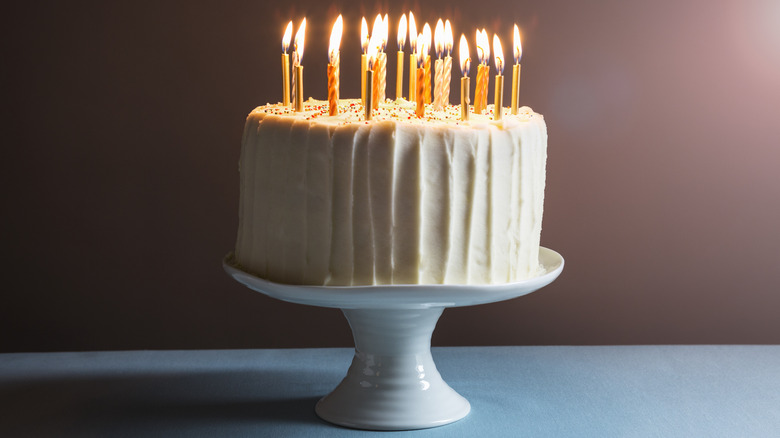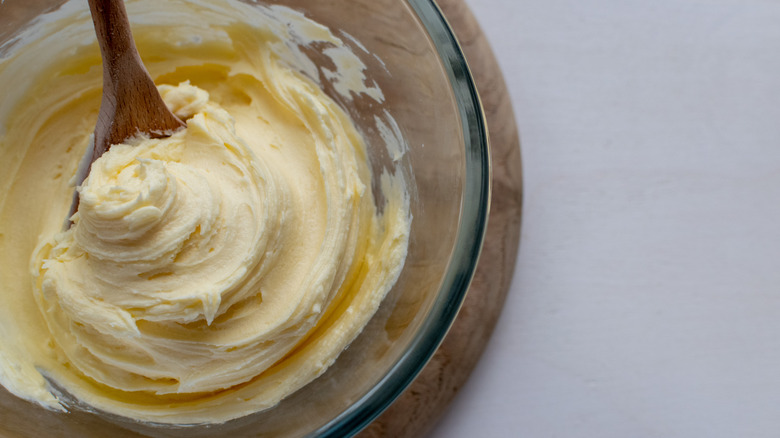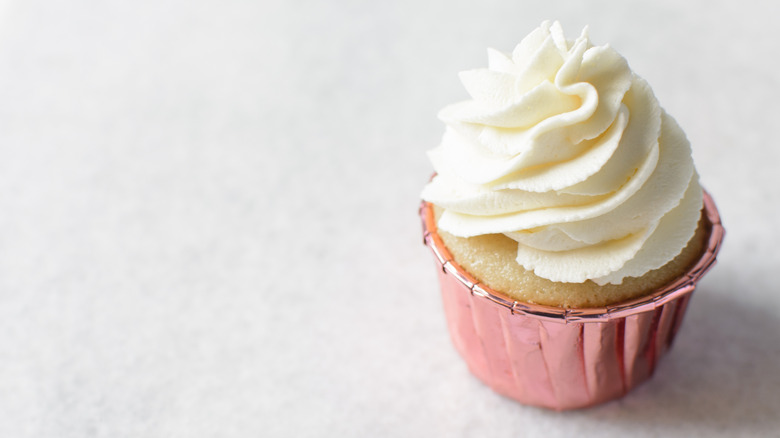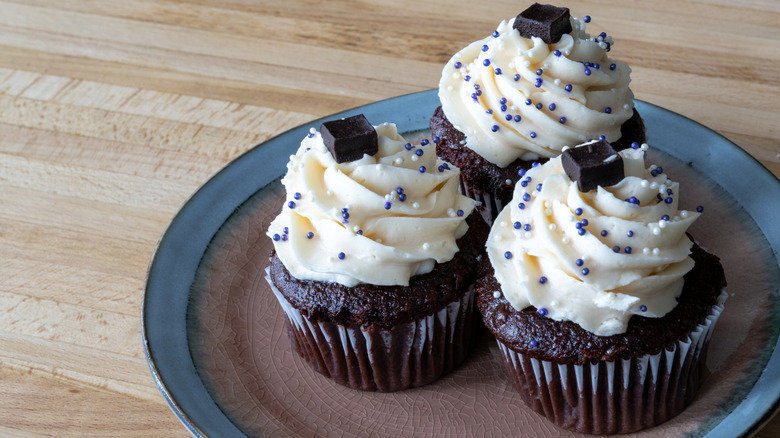Italian Vs Swiss Vs French Buttercream: What's The Difference?
There are times when even the best store-bought frosting just won't cut it. If you're going to go to the trouble of making a cake or cupcakes from scratch, you want to finish it with something that is great, not just good. You want a rich, decadent experience with velvety frosting to accompany your moist dessert. You want buttercream –- but what kind?
Yes, there are several different types of buttercream frosting, each with a butter base and varying degrees of sugar. For example, German buttercream uses relatively little, while American buttercream, as you might expect, uses a ton. The three types we're addressing here, though, are French, Italian, and Swiss buttercreams. They have their similarities –- they're all finicky about temperature, utilize eggs, and take quite a while to mix together (even with a stand mixer). But it's their differing characteristics, flavors, and uses that make them really interesting.
French buttercream uses egg yolks
French buttercream is the only one of the three frostings in this article that is made with egg yolks rather than egg whites. Accordingly, it's easily the richest of the three, with a deeper, more unctuous flavor. To put it another way, it is to the other buttercreams what brioche is to normal bread.
A hot sugar syrup is slowly streamed into whipped egg yolks, and cold (but not too cold) butter is added bit by bit. The result is something dense, sweet, and endlessly rewarding — not unlike the classic French movie, "Celine and Julie Go Boating."
But all that richness is a double-edged sword. As good as French buttercream tastes, its particular emulsion makes it uniquely prone to getting all melty and runny, so it is a poor choice for fancy designs. The egg yolks also color it a pale yellow, making it tricky to dye; if you're looking for a wedding cake with icing as white as the bridal gown, don't use French buttercream. But if you just want to coat your cake in something decadent, or if you're looking for a great filler between layers, French buttercream is the move.
Italian buttercream is light, sweet, and sturdy
Now we have Italian buttercream –- or more accurately, Italian meringue buttercream. As you might expect from something involving meringue, Italian buttercream is made using egg whites. It is a good deal lighter than its French counterpart, and it requires more sugar too. What really makes it special is its utility. It's a very friendly buttercream to work with, allowing you to pipe all sorts of intricate patterns onto your birthday cake with ease. Like the Italian comedy classic "Divorce Italian Style," its lightness doesn't come at the expense of its structure.
Italian buttercream is actually made quite similarly to French buttercream, but using only egg whites provides more airiness and structure, as well as a whiter color. After whipping egg whites in a stand mixer, the hot sugar syrup is poured in very, very carefully. Finally, the butter is beaten in a tablespoon at a time, and the mixture is whipped until light and fluffy.
Swiss buttercream is easier to make
In the film "The Third Man," the amoral Harry Lime famously declared that the cuckoo clock was the only thing Switzerland had to show for its centuries of peace; perhaps he'd have thought differently if he tried a good Swiss buttercream. Also known as Swiss meringue buttercream, it is a somewhat less risky endeavor than its Italian and French cousins.
For one thing, you don't have to handle any scalding hot sugar syrup, which will certainly come as a relief to those who don't want to consider their own mortality when making dessert. Instead, Swiss buttercream is made by heating sugar, salt, and egg whites together in a double boiler before being taken to the stand mixer to be whipped. Once cool, the butter is added a little at a time.
What does it taste like, though? Well, a whole lot like Italian buttercream, as it turns out, since it uses the same ingredients. Most of its differences relate to its texture, which is lighter than Italian buttercream but less sturdy and dependable when it comes to piping. Still, you won't find anyone complaining if they find it atop a cupcake. Just make sure you find the ideal cake-to-frosting ratio so you can really appreciate whichever one of these homemade buttercreams you try.



